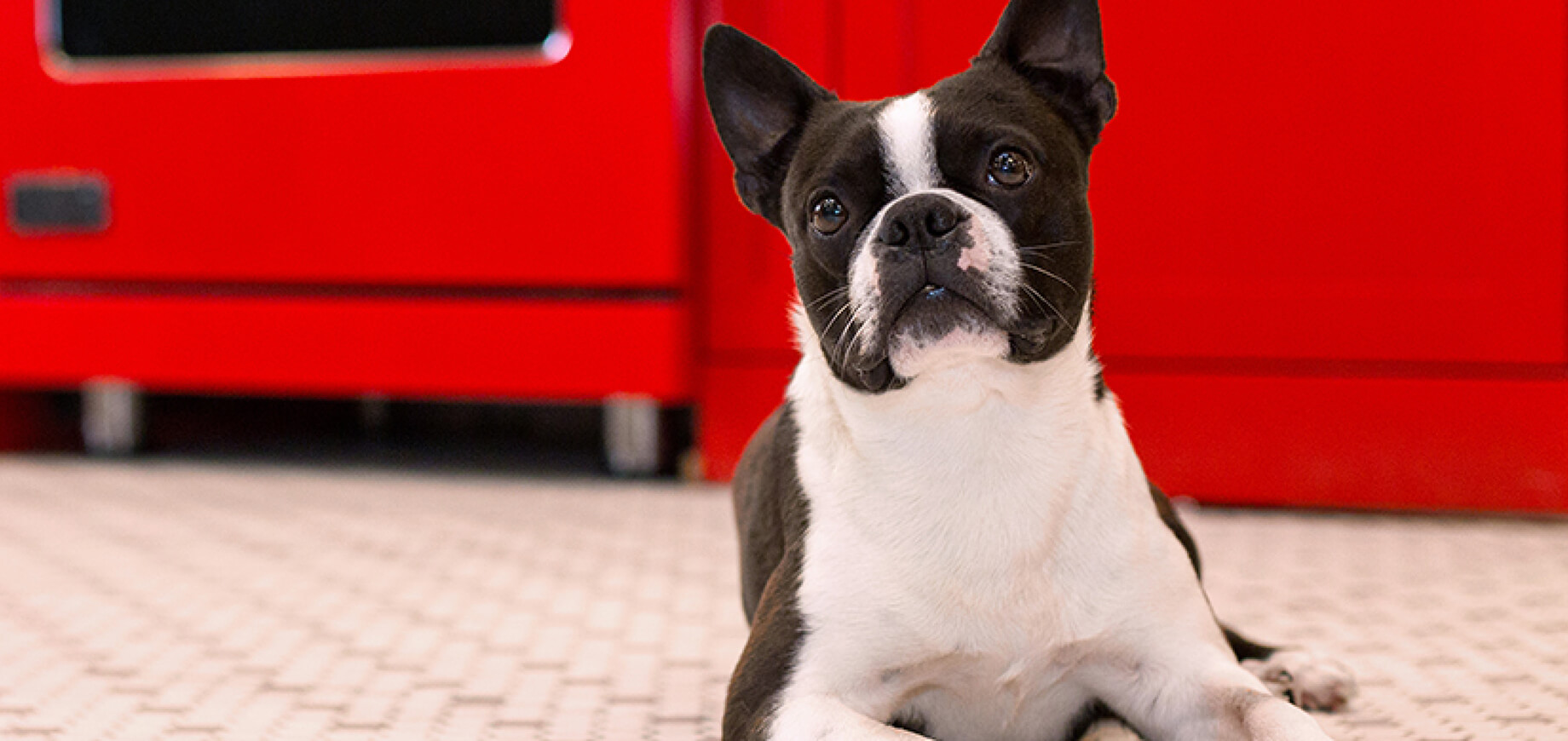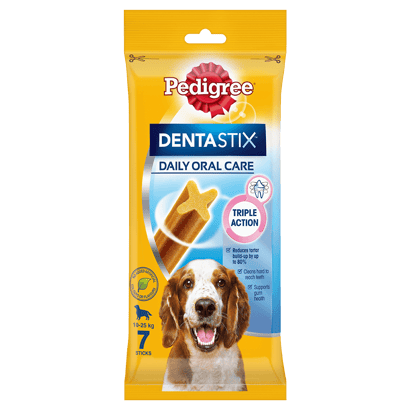Find products that match your dog’s needs

Those of us raised on cartoons have stereotyped ideas about dog-cat relations—and usually they involve images of frightened cats running at light-speed from an angry dog.
Like most ingrained notions of animal behaviour, this one is hard to put behind you. But once you know the truth about canine-feline relationships, you’ll start to see both animals in a new light. And you may even be tempted to add a cat to your dog-as-the-only-animal household, if that's appropriate.
Mention dogs and cats to some people and there’s one word that comes to mind: 'enemies.' But that’s a very strong word. Yes, some dogs do have high prey-drive instincts, and depending on how the dog was brought up, those tendencies may at times cause them to act out against a cat. For example, if the cat’s insecurity causes them to hiss or act aggressively towards your dog, the dog may be instinctively driven to give chase.
This is called 'predatory aggression' and involves stalking, chasing, catching, biting, and even killing. Trainers should be recommended if this is the case. The age of your dog also plays a factor. Many puppies just want to play when cats would rather not. For older dogs it often takes a little re-socialising to get the two to get along.
Dogs and cats have very different body language, so they need to get to know each other first. For instance, if a cat swishes their tail, it means they're irritated; if a dog wags their tail a certain way, it can mean that they're happy. This is a difference they have to learn. Similarly, how would a cat know a dog is angry and should be left alone if they're growling low in their throat without exhibiting stiff body language and/or direct eye contact? The cat may perceive the growling as purring, which means satisfaction and well-being in cat language. And, if a dog raises their paw, saying, 'Let's play,' it could be taken by the cat to mean rejection. If a cat and dog grow up together though, they’ll learn each other’s language and will likely lbe able to tolerate each other, and may even become playmates.
No matter what you've heard, cats and dogs can get along. You just need to be patient. Don't expect the dog and cat to become instant buddies. Most of all, relax. If you're stressed, your pets will feel it, which could botch your peacemaking efforts. In time, you may find that your dog and cat are getting along so well, you’ll forget those old cartoon images of canines chasing felines.
Step 1: Personal space—Put the new cat in a room with their bed and litter box. Allow them as much time as required to settle in and feel more relaxed. During this time, each pet will be detecting the scent of the other.
When the new cat appears to have settled in, try feeding both your new cat and your dog on their respective sides of the closed door to this room—but at a little distance, so that the cat and the dog aren’t agitated by each other. Progressively move the dishes closer to the door until they're eating their food calmly. How long this process takes depends on how each pet responds - don't rush things. Eventully, once both the cat and dog are eating happily on either side of the door, use doorstops to prop it open just enough for them to see each other. Assess how both pets are responding and only move onto step 2 once both are happy and relaxed.
Step 2: Face-to-face—Now that they're comfortable with each other's scent, put your dog's leash on and ask them to calmly 'sit', 'get down,' or 'stay'. Use treats to reward them when they're offering the desired behaviour, and have an experienced and trusted handler hold onto the dog’s leash. Same goes for the cat - offer treats to reward calm behaviour, and have the cat engaged in play with you. The aim is to have both animals in each other's presence, but both going about their own business, and having their own nice time. We don't need either of them actually interacting with each other, instead we want everyone to just be feeling calm and engaged in their own activity.
To help the cat remain relaxed, ensure they also have an escape route and access to a safe spot to take refuge. This might mean a resting spot high up where they can be out of the dog's reach. This will help keep the cat calm as they know they can exit whenever they desire. Continue to train the dog to be relaxed around the cat and vice-versa, through positive reinforcement. You want to avoid any situations where one chases the other.
If either pet appears stressed, frightened or over-excited, then things are moving too fast. Back away, and/or try again another day.
Step 3: Home alone—When you aren't home, keep your cat and dog separated until you're sure they can safely handle each other. Always provide the cat with an escape route and a resting spot out of the dog's reach.
A few pointers
Cat food is designed for a cat's unique dietary needs, and dogs have different needs. So it's important to keep your dog away from your cat's food bowl and your cat away from the dog's. The easiest way to do that is to put your cat's bowl where your dog can’t reach it, such as a wide shelf or piece of furniture that only they can reach. You also might try cutting a 'kitty door' into a closet, or into the door of a no-dog-allowed room, where your cat can eat in peace. This is an especially good idea if your cat gets stressed by your dog at mealtimes.

Find PEDIGREE® dog food online at one of our retailers today!
Buy online
Click to buy from any of the retailers below


